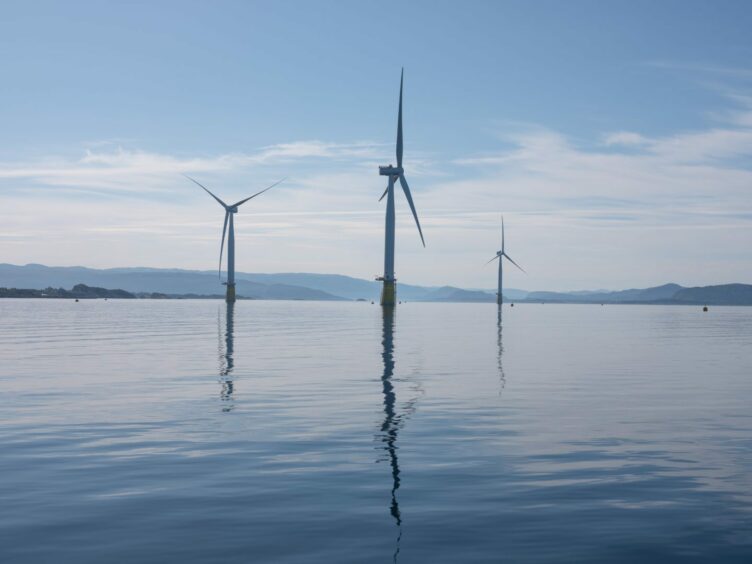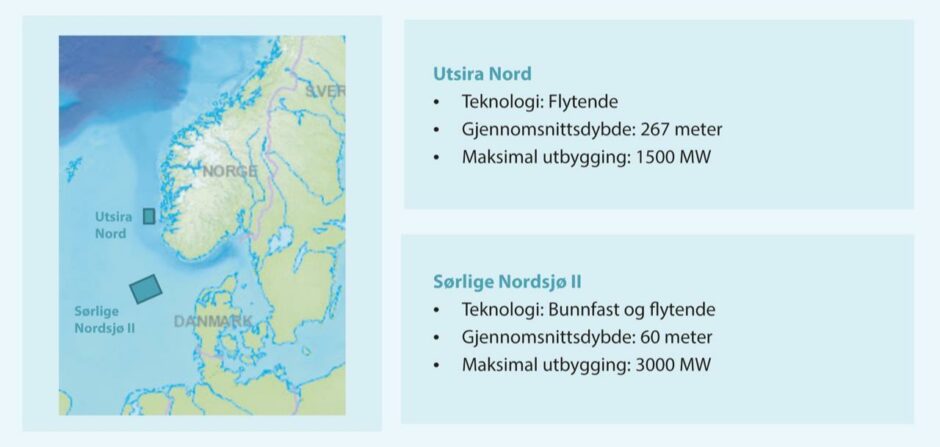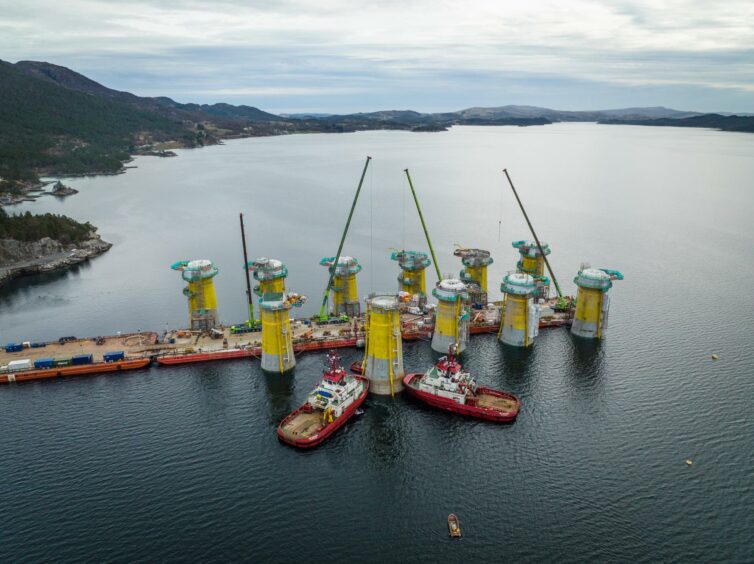
Despite its resources being amongst the best in the world, Norway has yet to harness much of its offshore wind potential.
This is, in part, understandable. Why would a country that already runs a roughly 98% renewable electricity grid based mainly on hydropower look to a (historically) expensive technology for comparatively little gain?
As of the start of this year, Norway had around 4.6GW of onshore wind capacity in operation, and just 30MW offshore.
Even its healthy onshore wind industry has been paused for some years in response to a local backlash against development in unspoilt environments, though the government announced in April it would resume licensing activity provided local municipalities were in favour of any proposed projects.
Geography is another factor. The deep waters of the Norwegian trench – ranging from 60m up to 1000m and more in suitably windy areas – mean fixed-bottom schemes have been a less viable option, and part of its relative hesitance has been the wait for floating wind technology to mature.
However, the country’s historic oversupply is set to recede as demand from transport and heavy industry increases, and as Norway looks to maintain its energy exports to other linked markets, offshore wind is likely the next frontier for clean energy expansion.
That was made explicit in May, when the Norwegian government announced its intention to open up vast new areas of licensing for offshore wind – both fixed and floating – with the goal of reaching 30GW by 2040.
“This is nearly equivalent to the amount of electricity we currently produce in Norway. Over the next 20 years, we will go from having two offshore wind turbines in operation to having around 1,500 turbines,” said Prime Minister Jonas Gahr Støre.
“This represents a boost for green industry in Norway and can provide a large amount of renewable energy in the future. This development is about providing affordable electricity to individuals and businesses. If we are to succeed, we need to invest now – and we need to invest on a large scale,” he added.
‘Qualitative’ process
Work towards that goal is already underway. First mooted in 2020, plans are now being progressed to license 4.5GW of capacity in the Utsira Nord and Sørlige Nordsjø II areas in the Norwegian North Sea.
Utsira Nord is an area of 380 square miles located northwest of Stavanger, which the government says is suitable for floating wind sites, while Sørlige Nordsjø II covers around 1,000 square miles bordering the Danish North Sea, where bottom-fixed turbines may be more appropriate.
The Sørlige Nordsjø II lease area will be split into two 1.5GW phases, the government has said, the first of which will be offered via an auction to projects that can be directly connected to the mainland grid.
Reports have suggested the second tranche may then be developed as a “hybrid” scheme, with connections to the wider European continent, enabling the export of electricity and offering “a major contribution to the green transition in Europe.”
Utsira Nord, meanwhile, will follow a “qualitative” model more closely resembling the ScotWind process across the North Sea, given the greater uncertainty and risks associated with technology and cost estimates in the fledging floating sector.
“By awarding the area of Utsira Nord based on qualitative criterias, we aim to facilitate innovation and technological development that contribute to cost reductions for floating technology,” Minister of Petroleum and Energy Terje Aasland said in April.
State-run grid operator Statnett has been handed the responsibility for the planning of the offshore grid, in accordance with guidelines set by the energy ministry.
As the government has acknowledged, 30GW is simply “too large” for the grid to accommodate. Therefore, licensing rounds will also be closely linked to wider electrification goals for the oil and gas sector and for exports – something which will also help support Norway’s sovereign wealth goals.
“Investment in offshore wind is also the key to the electrification of the Norwegian continental shelf. We will explore how to employ a future resource rent tax on offshore wind to ensure that a larger proportion of private-sector profits are used to the benefit of society as a whole,” Minister of Finance Trygve Slagsvold Vedum explained.
As it stands, the Government said it plans to carry out its next licensing round for new offshore wind areas in 2025, in which it plans to open an area “five to six times” that of Sørlige Nordsjø II – or roughly 1% of the country’s sea areas, again to be done in stages.
In the meantime, the Ministry of Petroleum and Energy will consider how to streamline the licensing process by assessing applications and approving the detailed plans at the same time.
Offshore firms pile in
Despite slow progress domestically, Norwegian companies have not been idle.
Seeing the value in moving the sector forward, Equinor has entered a range of global markets while also developing and refining its Hywind floating wind technology, taking the spar-like turbines from a minor demonstrator project to the UK’s first – and most productive – offshore project.
This summer construction began on Hywind Tampen, an 88MW project aimed at providing electricity for the Snorre and Gullfaks oil and gas fields. While a shortage of steel has recently forced full commissioning into next year, seven of Hywind Tampen’s 11 turbines should be generating power by the end of 2022.
Norway’s 30GW sprint will be further aided by its offshore oil and gas sector, who have already sought to export expertise to various schemes around the world.
Take Aker Offshore Wind – the dedicated unit of the Norwegian industrial investor – which is already bidding for or building projects in the US, South Korea, Japan and Sweden.
It too will bid in consortia alongside Statkraft, BP and Engie-backed group Ocean Winds for licences in Utsira and Sørlige Nordsjø, alongside a raft of others, including the likes of Shell, which is partnered with utilities BKK and Lyse, Vattenfall and Seagust, as well as Orsted and Fred Olsen Renewables – to name but a few.
Equinor meanwhile has formed separate consortia with RWE and with Vårgrønn – the latter yet another offshore wind unit set up by equity investor HitecVision and Italian oil and gas giant Eni.
The prevalence of new, wind-focused ventures backed by well-known energy majors speaks volumes as to the interest in the emerging sector, and bodes well for local industry as a whole.
A recent Menon Economics study cited by WindEurope found that floating offshore wind could provide as many as 52,000 new jobs in Norway by 2050.
Moreover, Norwegian players could take between 5-14% of the global floating wind market, equivalent to a turnover of €9.5bn according to the study.
While building capacity to actually manufacture and build wind equipment may prove to be a separate hurdle, it’s clear that – for now at least – contractors are very keen to develop and export the expertise honed in Norway’s oil and gas sector.
But if the success of schemes like ScotWind – which sought 10GW and procured up to 25GW – are anything to go by, the domestic market may prove more than enough to fill up development pipelines over the next decade.
Recommended for you

 © Supplied by NPD
© Supplied by NPD © Supplied by Equinor/Johnny Engel
© Supplied by Equinor/Johnny Engel